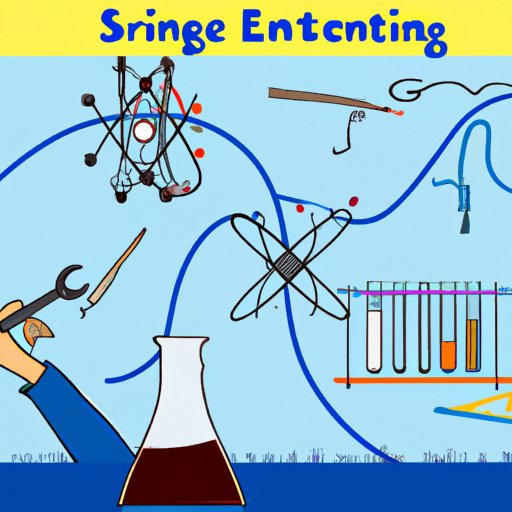Introduction
Science and engineering are two distinct yet closely related fields of study. Science involves the systematic study of natural phenomena, while engineering is the application of scientific knowledge to design and construct useful products and systems. While there are many differences between these two disciplines, they also share many common practices and approaches.

Analyzing and Exploring the Similarities in Science and Engineering
The first similarity between science and engineering is their interdisciplinary nature. Science involves the integration of multiple disciplines such as physics, chemistry, biology, and geology. Similarly, engineering requires a combination of disciplines such as mathematics, computer science, and materials science in order to design and build effective solutions.
Both science and engineering rely on the scientific method for conducting research. This includes formulating hypotheses, testing them through experimentation, collecting and analyzing data, and drawing conclusions based on the results. Similarly, both disciplines use theories to explain and predict natural phenomena, as well as to guide the design process.
Finally, both science and engineering have a focus on problem-solving. Scientists seek to solve problems in nature, while engineers work to solve problems in the built environment. In both cases, the goal is to identify and address real-world challenges in an efficient and effective manner.

Examining the Intersection of Scientific Inquiry and Engineering Design
One of the key similarities between science and engineering is the role of experimentation. Experiments are used in both disciplines to test hypotheses and draw conclusions about the natural world. Scientists may conduct experiments to test theories and develop new insights, while engineers may experiment with different designs and materials to create better solutions.
Data collection and analysis are also important aspects of both science and engineering. Scientists collect data to gain insight into natural phenomena, while engineers use data to inform their designs and optimize performance. In both cases, data is analyzed using statistical methods and mathematical models in order to draw meaningful conclusions.
Finally, modeling and simulation are key tools used in both disciplines. Scientists use models to simulate the behavior of natural systems, while engineers use simulations to test their designs before constructing them in the real world. Both types of simulations allow researchers to explore different scenarios and make predictions without having to physically build or test anything.
Comparing the Problem-Solving Processes of Science and Engineering
The problem-solving processes of science and engineering are very similar. In both cases, the process begins by identifying the problem and defining the goals. Once the problem has been identified, the next step is to gather information and brainstorm potential solutions. This involves researching the existing literature and discussing ideas with colleagues.
Once potential solutions have been identified, the next step is to evaluate them and make improvements. This involves testing the solutions and assessing their performance against the original goals. The final step is to implement the best solution and monitor its performance over time.
Investigating How Mathematics is Used in Both Disciplines
Mathematics plays an important role in both science and engineering. Scientists use mathematical models and algorithms to describe and analyze natural phenomena, while engineers use mathematical calculations and formulas to design and construct complex systems. In both cases, mathematical calculations are used to make predictions and draw conclusions from data.
Statistical analysis is another key area where mathematics is used in both disciplines. Statisticians use statistical methods to analyze data and draw conclusions from it. Engineers use statistical analysis to assess the performance of their designs and determine whether they meet the desired specifications.

Exploring the Role of Experimentation in Both Fields
Experimentation is an essential part of both science and engineering. Scientists use experiments to test hypotheses and draw conclusions about the natural world. Engineers use experiments to test their designs and measure their performance. In both cases, experimentation is used to assess risk and uncertainty and to explore new ideas.
Conclusion
In conclusion, science and engineering share many common practices, including their interdisciplinary nature, the use of scientific methodology and theory development, focus on problem-solving, utilization of mathematical models and algorithms, experimentation, and more. These similarities demonstrate how the two disciplines are closely intertwined, and how they can be used together to solve some of the most challenging problems facing society today.
Key Takeaways:
- Science and engineering share many common practices, including their interdisciplinary nature, the use of scientific methodology and theory development, focus on problem-solving, utilization of mathematical models and algorithms, experimentation, and more.
- These similarities demonstrate how the two disciplines are closely intertwined, and how they can be used together to solve some of the most challenging problems facing society today.
(Note: Is this article not meeting your expectations? Do you have knowledge or insights to share? Unlock new opportunities and expand your reach by joining our authors team. Click Registration to join us and share your expertise with our readers.)
